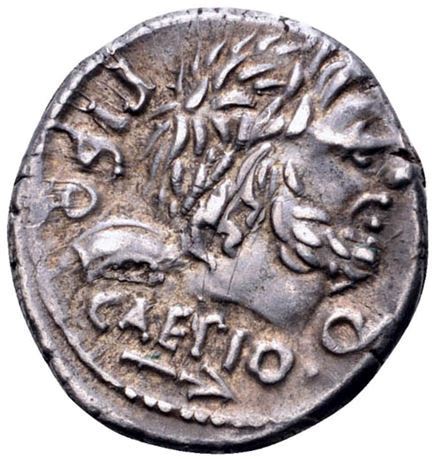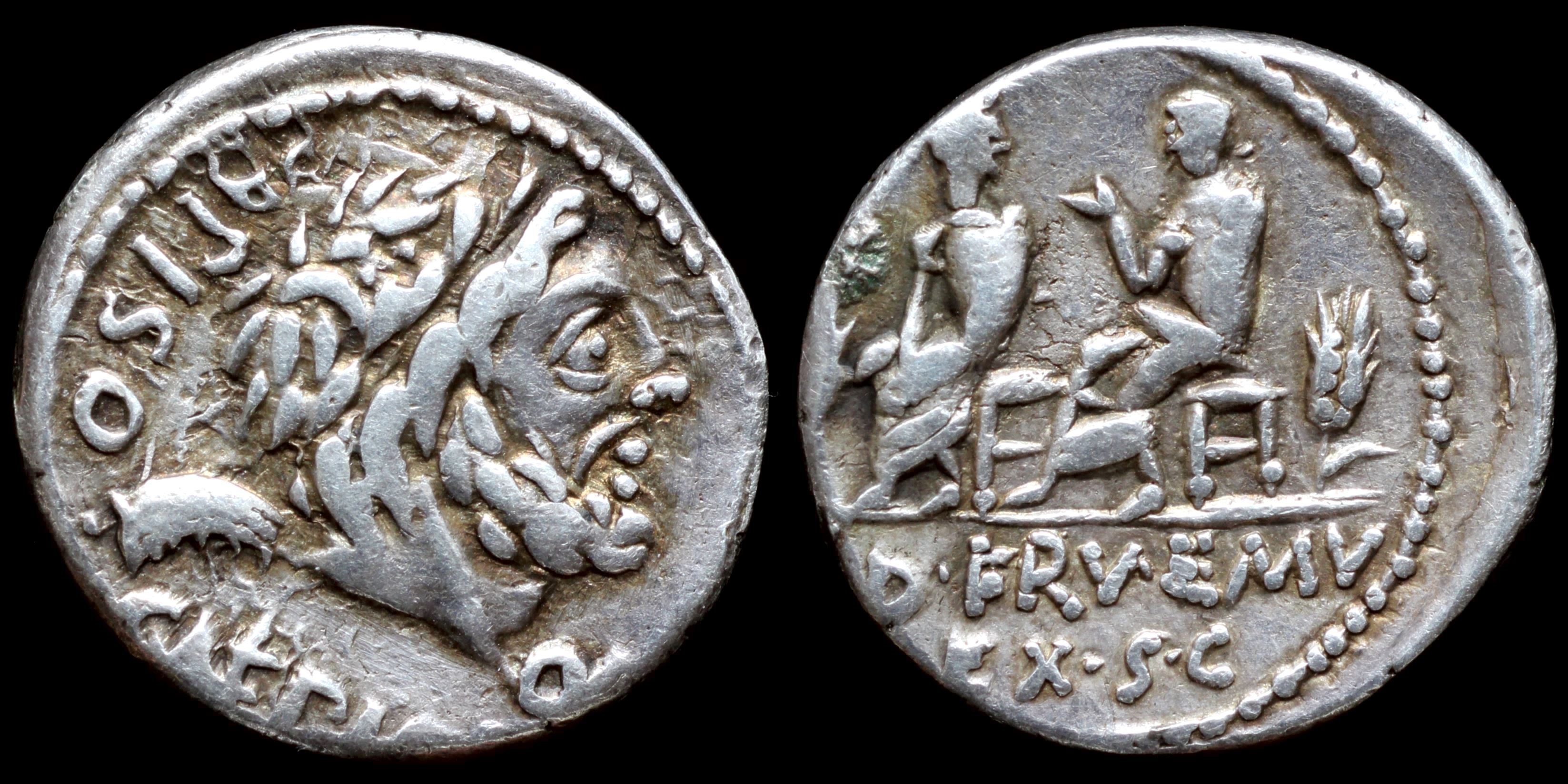Quintus Servilius Caepio the Younger struck coins in the year 100 BC, as part of this tenure as Quaestor Urabanus in the same year.
In 92 BC, Caepio prosecuted Marcus Aemilius Scaurus, the eminent princeps senatus, for supposed provincial extortion and, it seems, for taking bribes from Mithridates VI of Pontus. Scaurus managed to issue a counter-accusation against Caepio, and the two accusations collapsed. During the Social War, Caepio was made a Legate in the Roman Army. He was captured and executed by the Italian allies after being tricked into leaving a secure position.
Gens Servilia was a patrician family at Rome. The gens was celebrated during the early ages of the Republic, and the names of few gentes appear more frequently at this period in the consular Fasti. It continued to produce men of influence in the state down to the latest times of the Republic, and even in the imperial period.
In 92 BC, Caepio prosecuted Marcus Aemilius Scaurus, the eminent princeps senatus, for supposed provincial extortion and, it seems, for taking bribes from Mithridates VI of Pontus. Scaurus managed to issue a counter-accusation against Caepio, and the two accusations collapsed. During the Social War, Caepio was made a Legate in the Roman Army. He was captured and executed by the Italian allies after being tricked into leaving a secure position.
Gens Servilia was a patrician family at Rome. The gens was celebrated during the early ages of the Republic, and the names of few gentes appear more frequently at this period in the consular Fasti. It continued to produce men of influence in the state down to the latest times of the Republic, and even in the imperial period.


Obverse: head of Saturn right, harpa left; PISO · CAEPIO· Q
Reverse: two questors seated left between two stalk of grain; AD·FRV·EMV / EX·S·C
Diameter:
18 mm
Die Orientation: -
Weight: 4.1 g
Die Orientation: -
Weight: 4.1 g
This exceptional type was a joint issue of the Quaestor Urbanus (Caepio) and the Quaestor Ostiensis (Piso), struck to finance discounted grain on the initiative of Saturninus (lex frumentaria de semissibus et trientibus = one semis and one triens for modius). Coins were struck by special decree of the Senate (Ad frumentum emundun, ex senatus consulto) in order to fulfill above-mentioned decree.
Crawford 330/1b, SRCV I 210, Sydenham 603a, RSC I Calpurnia 5a
